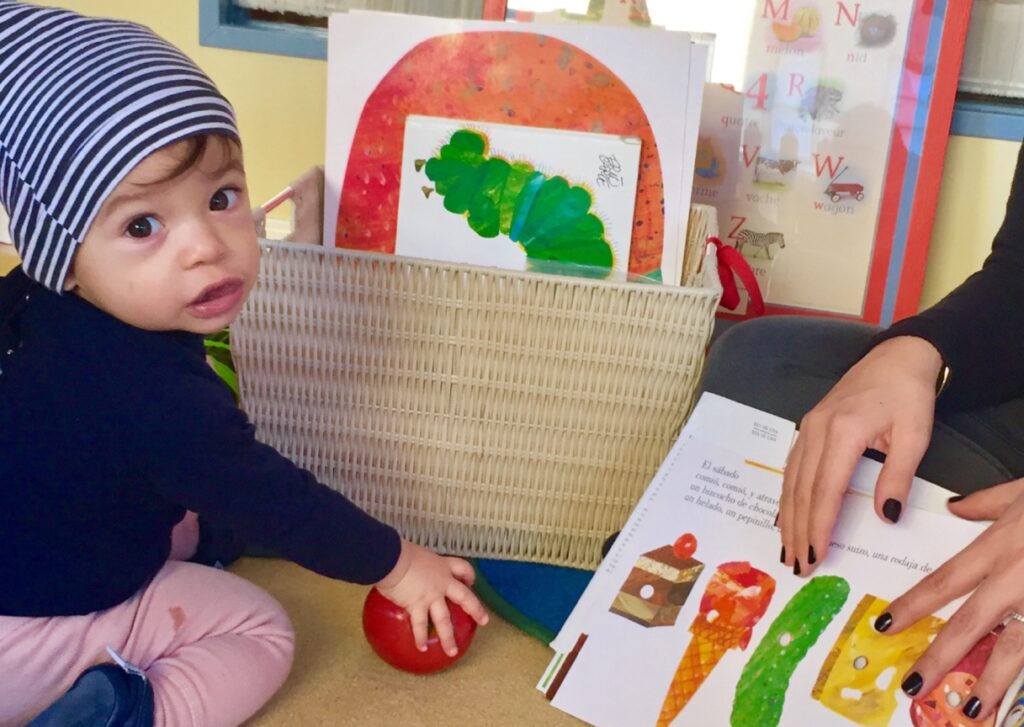Every Age, a Remarkable Stage: Your young child’s development year-to-year
Every few weeks, we’re focusing on a specific age group to explore the exciting things that are happening in your child’s body and brain—be sure to catch all the articles in the series!
Today, we’re talking about your amazing baby’s first year.
★★★
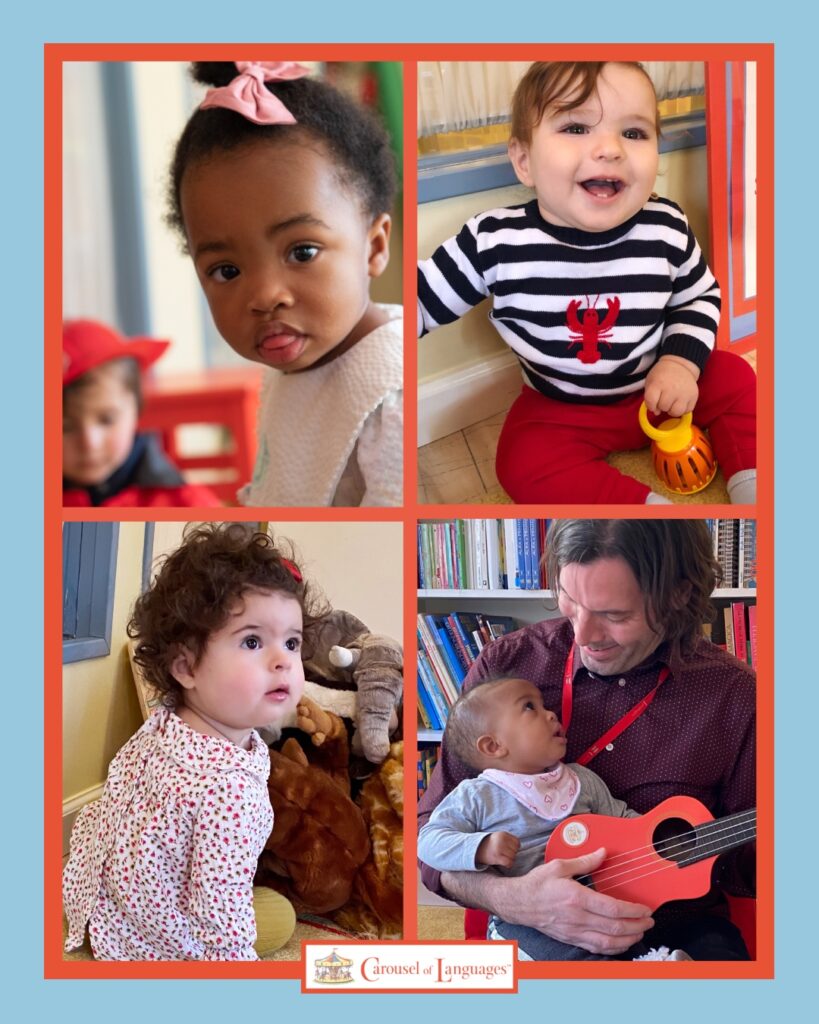
Babies are born wired to learn. This is one of the key takeaways from the fascinating research presented in “The Scientist in the Crib: What Early Learning Tells Us About the Mind,” by Alison Gopnik, Andrew N. Meltzoff, and Patricia Kuhl.
During a child’s first years of life, the brain is uniquely pliable. In this period of “neuroplasticity,” the neural circuitry is being formed. These are the information pathways in the brain, connections that lay the foundation for future learning. Synaptic connections are built in response to new experiences.
From the moment your baby is born, positive experiences, loving relationships, and a nurturing environment mold and shape the developing brain.
Our work at Carousel is deeply rooted in Dr. Kuhl’s research, which demonstrates that exposure to a foreign language during this sensitive window builds a more powerful brain by boosting the production of those synaptic connections.
Swiss psychologist Jean Piaget (who famously said, “Play is the work of the young child”) made the first formal study of cognitive development in children—including reasoning, memory, language, social-emotional skills, and more. Piaget believed that children take an active role in their own development, interacting with the world to gain knowledge. He identified and defined four main stages of children’s cognitive development. The first of these stages, from birth to approximately 24 months, is the Sensorimotor stage. For the first 2 years of life, infants learn through their bodies — their senses and movements help them connect with and understand the world around them.
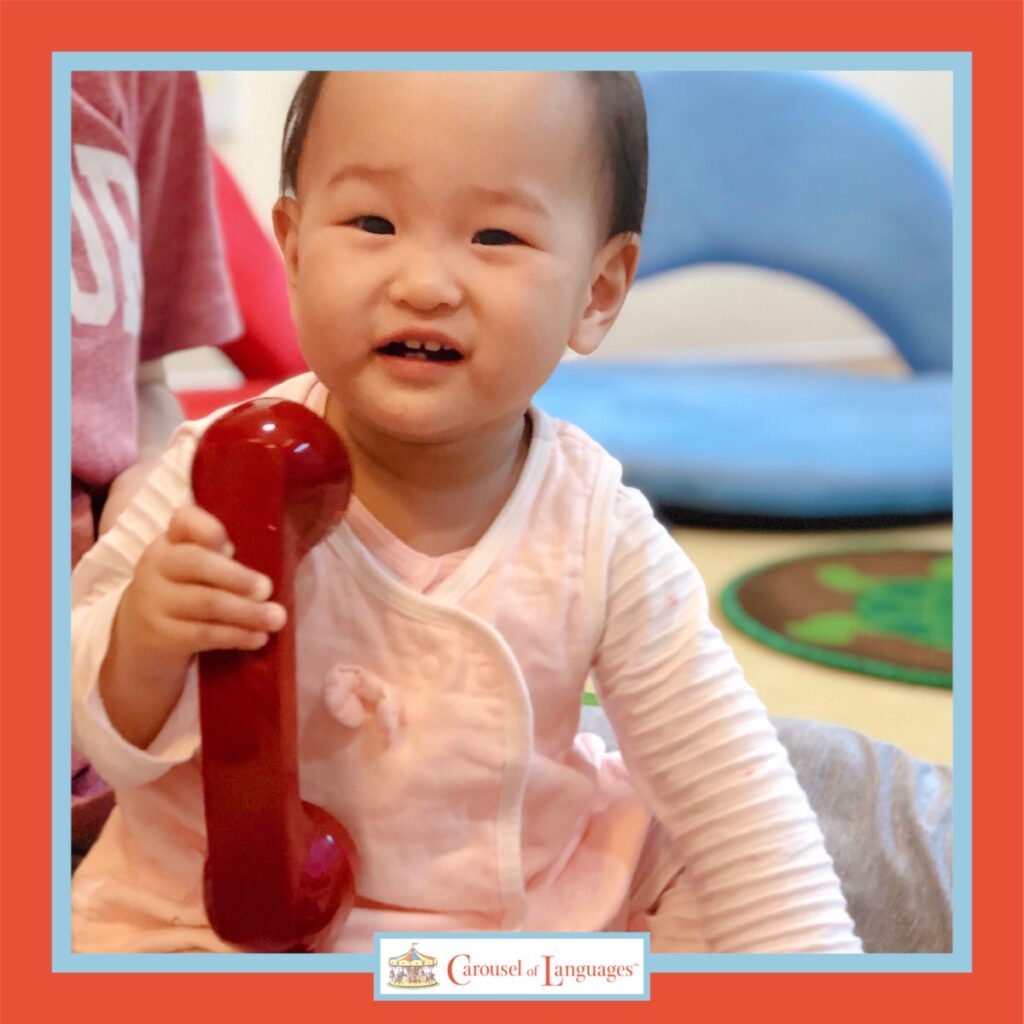
The first 12 months, in particular, are crucial in language development. Research has shown that babies are born with the capacity to learn language, and the process begins immediately. Infants rely on sensorimotor connections when listening to speech, and the developing brain requires these experiences to form neural circuits.
Although a newborn’s eyesight is limited, they are able to focus effectively on objects and faces about 12 inches in front of them—about the distance between the eyes of a babe in arms or at the breast, and the face of her loving parent. From the very first days, as you talk and coo to your beautiful new baby, they’re watching the shape and movement of your mouth–and the twinkle in your eyes! Warm, playful, loving, face-to-face interaction is crucial to both brain growth and success in language learning.
Cuddle, smile, and hold hands as you talk and read with your baby. Make lots of eye contact. Point out objects and activities in your daily life, home, and neighborhood, naming them for them as you go about your normal routine. Sing and dance. Play games. Don’t feel silly speaking your natural “parentese”– the high-pitched sing-song language that we instinctively use with infants. It’s very important to language development! It helps babies become familiar with the sounds of their mother tongue.
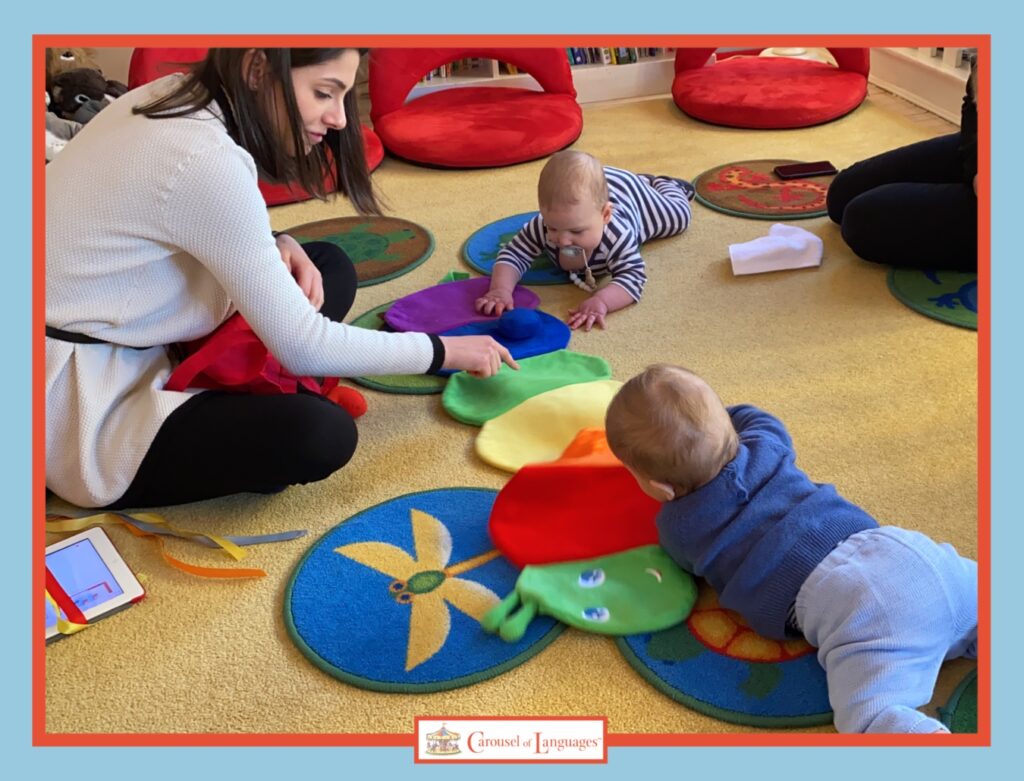
Play with your baby every day. Make time for play while they’re awake and cheerful, and be alert for when they get fussy or tired, and it’s time for a quiet rest.
“During this stage,” explains the Centers for Disease Control and Prevention (CDC), “babies also are developing bonds of love and trust with their parents and others as part of social and emotional development.”
Respond when your baby is in distress — their cries tell you that something is wrong. Comfort and reassure them, attend to their needs. Don’t worry, you won’t spoil your child. You’re building a secure relationship for your future together.
Establishing and maintaining a basic routine will also help your infant feel secure and happy.
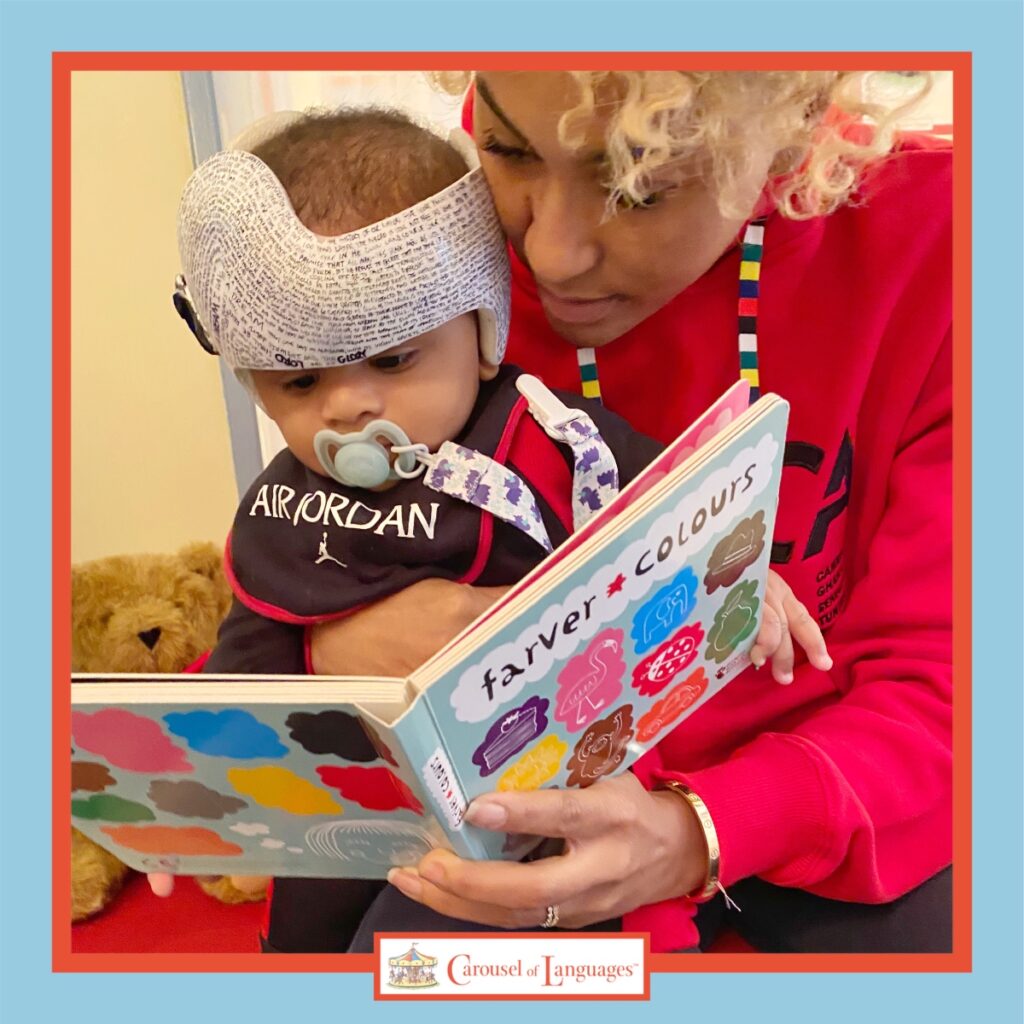
★★★
Piaget defined 6 fascinating substages of the Sensorimotor period, the first 4 of which take place in the first 12 months.
Reflexes: In their first month of life, your infant gets to know their surroundings through automatic, inborn reflexes like rooting and sucking, grasping, and looking.
Primary Circular Reactions: From 1-4 months, your baby learns to repeat physical actions that produce pleasurable sensations with his own body, such as thumbsucking, kicking and wiggling, smiling, and cooing.
Secondary Circular Reactions: During the 4-8 month period, as they develop more awareness of the world around them, your baby discovers they can repeat an action using an external object to cause pleasure — shake a rattle, put a toy in their mouth, or drop something on the floor to make a bang. They make more vocal sounds now, using baby babble to express feelings and even imitate speech patterns. Respond to the sounds and the emotions they express, taking turns in a “conversation.”
Coordination of Secondary Circular Reactions: Between 8 and 12 months, your baby starts to show signs of using acquired knowledge to achieve a goal. They have clear intentions and can combine learned actions to produce a desired result. For example, reaching out for a toy and pushing something else out of the way to get the one they want, or crawling over to pick something up.
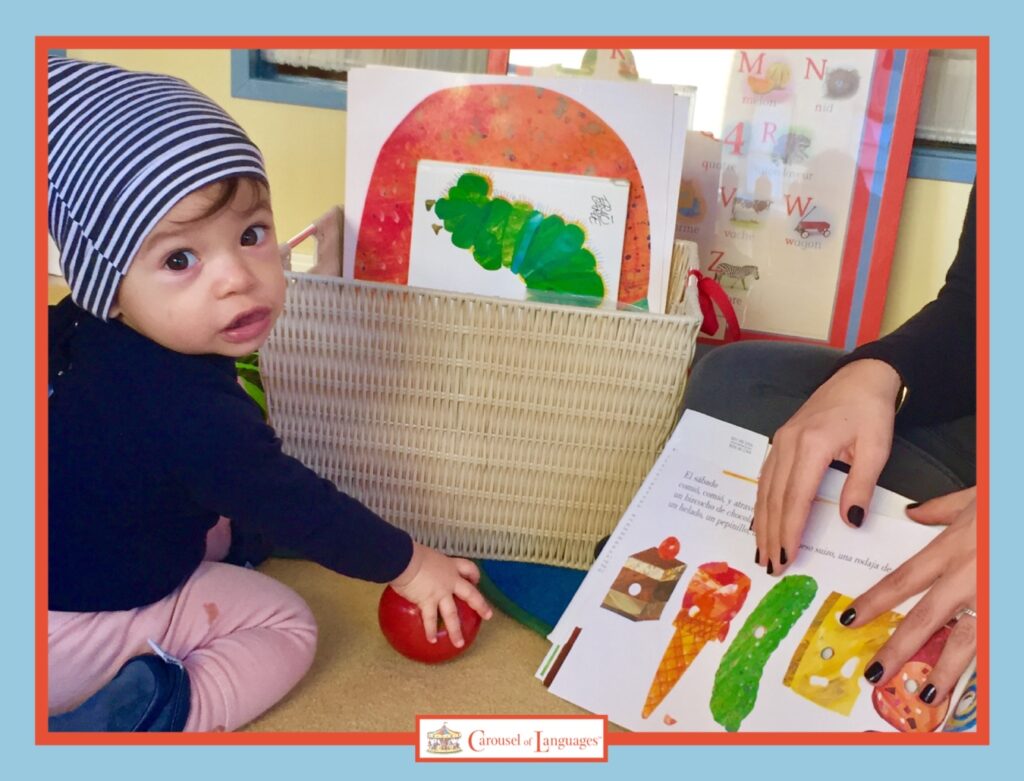
One of the most important milestones your baby will achieve during these first exciting months is a grasp of object permanence. Piaget believed it begins around 8 months, but researchers now believe it can start a bit earlier. Object permanence is the understanding that just because an object disappears from sight doesn’t mean it’s gone forever. They realize that if you hide a toy under a blanket, it’s still there and you can bring it out again. They may look for the kitty when it runs under the couch. If the kitty runs under the couch.
Of course, once they know that something or someone can return, they may want them to return right away — and use their developing voice to express that feeling loudly!
Play Peekaboo—babies love it. They smile and laugh as you hide and pop out again and again. It’s a joyful bonding game in which you give them your full attention, look them in the eye, and share laughter. But it’s also a very important learning activity. It helps them realize that when mommy or daddy disappears for a moment, it’s ok — they always come back. This can help ease the natural separation anxiety that occurs at this stage.
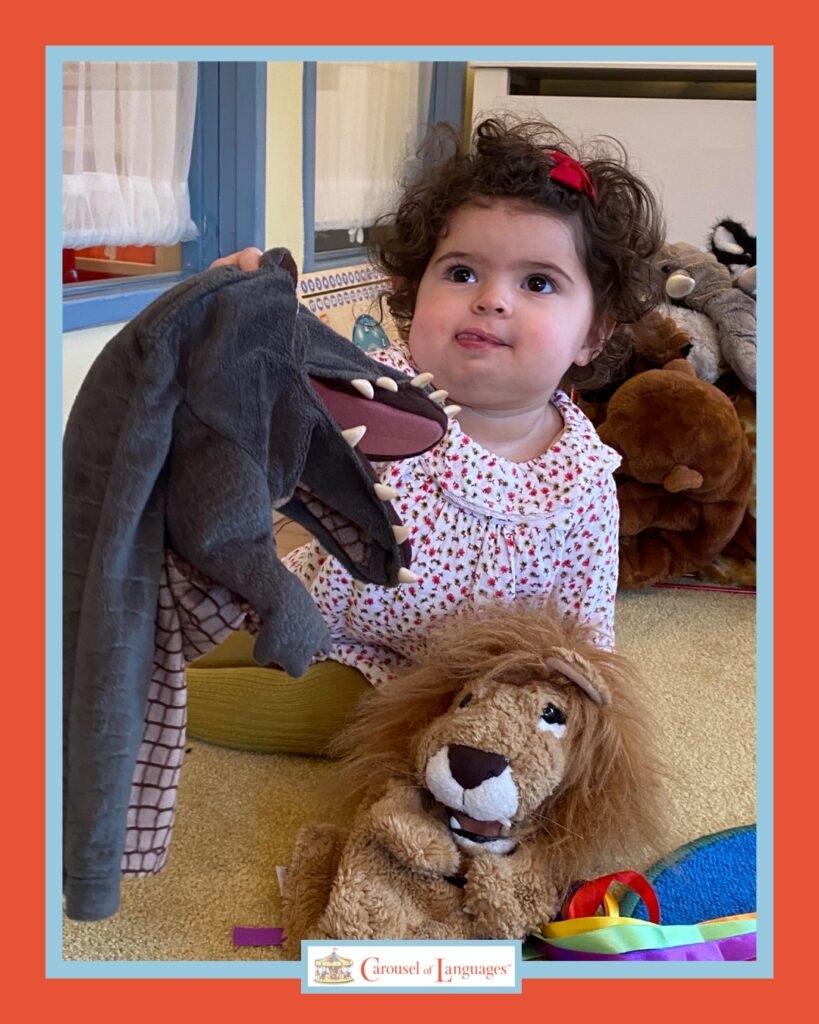
The first year is a time of incredible growth and joy! Relish it.
And remember that not all babies do things at precisely the same time. These stages are an outline of how development progresses. If you’re ever feeling concerned, talk to your pediatrician.
★★★
At Carousel, we specialize in the most vital brain development and language-learning window: 0-5 years. Carousel of Languages Teaching SystemTM, our research-based signature curriculum, grows with your child to address the particular needs of every stage. Our program is designed to advance language development, inspire curiosity, and cultivate joy in learning.
We have captivating programming and exquisite learning materials for school-age children as well as babies and toddlers, and tailored tutoring available for kids up through the teen years.
★★★



